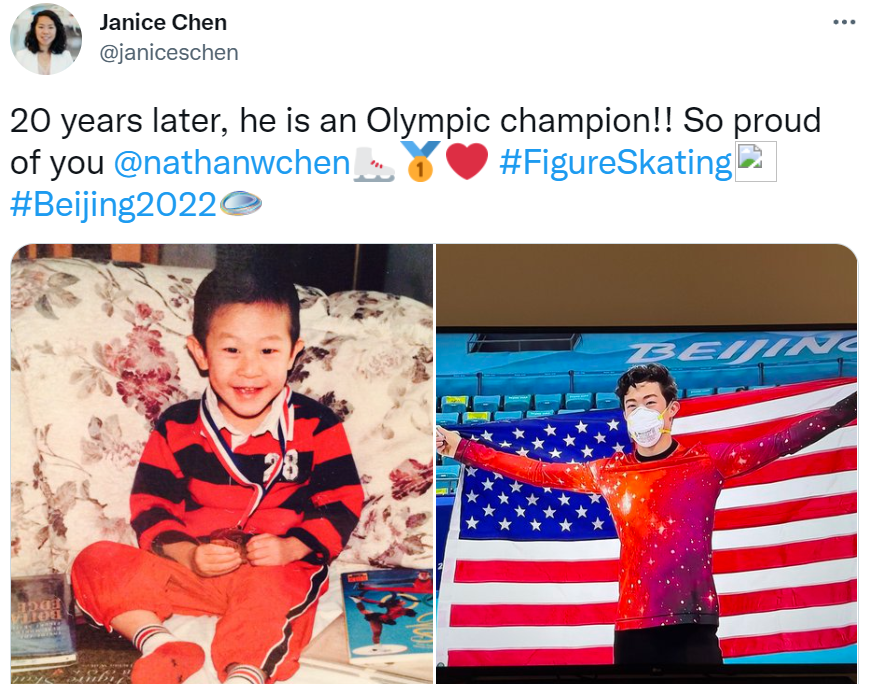Biotech’s Future off The Beaten Path

Luke Timmerman, founder & editor, Timmerman Report
The future of biotech isn’t limited to a few square miles in Cambridge, Mass. and South San Francisco.
Biotech is starting to spread its wings in minor league towns. That’s good news. It’s also necessary for the industry to grow and continue to better integrate into the wider world.
Let’s look at an example close to my home in Seattle.
Everett, Wash. is a small city of about 110,000 people about 45 minutes north of Seattle. It’s best-known as the home of the world’s largest building in the world by volume – the Boeing factory that makes jumbo jets like the 747.
It’s a blue-collar town that has seen better days. Boeing’s troubles over the past two decades have taken a toll. A lot of post-World War II housing stock is worn and mossy, in need of a good scrub. The Seattle Mariners have a Single-A minor league baseball affiliate there, the Everett Aquasox. A family of four can have some affordable fun watching the Aquasox, but the high-tech cool kids from Seattle don’t go there to hang out.
Except Seagen. The maker of antibody-drug conjugates for cancer and the region’s anchor biotech company looked North and didn’t see a place that’s run-down and tragically unhip.
It saw opportunity.
Seagen grew up in suburban Bothell, Wash. It has 11 buildings there in a hilltop office park with labs, offices, and its own biologics manufacturing space. That’s not enough anymore. Nearing its 25th anniversary, Seagen saw its revenues grow 38 percent last year to $1.6 billion. It now has three marketed cancer drugs, a big partnership with Merck, and a growing appetite for space with 2,675 employees on the payroll.
In June, Seagen made a big investment in the future. It signed a lease to build a 258,000 square foot building on about 20.5 acres of land in Everett. The property is in a business park with an Amazon distribution center, as well as Funko LLC and US Foods distribution centers. Seagen has said in regulatory filings that it plans for this new building to house additional manufacturing, laboratory, and office space.
The company, in its 10-K filing on Feb. 9, said it plans to spend $350 million to $400 million over the next three years in capital expenditures on this facility.
Company officials have declined to comment publicly. Surely there will come a time when they invite the local media and elected officials in for a ribbon-cutting.
Why Everett?
First, infrastructure. The Seattle region, now one of the world’s top tech hubs, has been growing fast for two decades. There’s a need for a second airport, in addition to Sea-Tac. Local officials in Snohomish County have cleverly positioned Everett’s Paine Field to fulfill that need. Paine Field was built in 1936 as part of a New Deal infrastructure project. It has a long history of military aviation and general aviation, and as the home for many maiden flights of new planes built by Boeing. It attracts aviation buffs from around the world. It has a remarkable collection of restored World War II-era fighter planes acquired by the late billionaire Paul Allen.
Over the last couple years, Alaska Airlines, working with local officials, made a long-term investment in commercial passenger flights from Everett’s Paine Field. It surely didn’t live up to expectations in the early days, because the pandemic depressed flight traffic of all kinds. But if you’re a company like Seagen, this easy access to a low-traffic airport has to be extremely attractive for your executives who need to fly, and for your manufacturing operations that need steady and easy flow of supplies.
Second, ground transportation. The local transit authority, Sound Transit, has funding to build passenger light rail that extends all the way from Seattle to Everett. It’s in the planning phase, and isn’t supposed to open until 2037-2041. That might sound impossibly far off, but if you think in long run terms, like a company with lifesaving cancer drugs to manufacture consistently and reliably, you need to think in 30-40-50 year terms. By the time the light rail is complete, making it easy to get around Everett and nearby suburbs, the Seagen facility should be operating full tilt.
Third, housing. The cost of living in Everett is 18 percent higher than the national average, while Seattle is 36 percent higher than the national average, according to Salary.com. The median home in Everett costs $572,000, according to Redfin. That’s not cheap, but it’s a bargain compared with the $765,000 median home price in Seattle (and I can tell you from shopping around, that’s a conservative number in Seattle, where pretty crummy homes sell for $800,000 and up.)
The point here is that if you’re a thriving mid-to-large biotech company like Seagen, you need room to grow. We’ve learned from the pandemic that it makes sense to invest for the long-term on domestic soil for national security reasons, for shipping and logistics reasons, and for domestic economic development reasons. Moving to a location away from the hottest scientific ZIP codes can save a company money. It can also be an attractive lure for employees – especially young employees trying to get established – to be in a place where they can imagine making a decent enough salary to afford a home and put their kids in a decent school.
This scenario can easily be applied in other biotech hubs. Moderna has its key R&D facilities in Cambridge, Mass., and a strategically vital manufacturing facility in Norwood, Mass. (pop. 31,000). South San Francisco-based companies can look for second facilities all over the East Bay, and points north toward Sacramento. Recently, I wrote about a bispecific CAR-T therapy startup founded on technology from UCLA. It decided to start up in Camarillo, Calif. (I needed to look it up on the map). That’s about an hour away from UCLA in Ventura County, a bit past Amgen in Thousand Oaks.
That startup, ImmPACT Bio, wants to stay in touch with the scientific wizards at UCLA. It also needs to invest in an in-house cell therapy manufacturing facility to make these complicated cells. That facility will be close by in the West Hills area of Los Angeles.
Some of the next-generation cell and gene therapy manufacturing facilities will be making custom products. They’ll need to be small and nimble. It helps to be close to the scientists who can have a healthy exchange over various process refinements, and go over subtle differences in products that can happen during scale up. These facilities definitely don’t need to be as big and costly as a Boeing factory.
But these biotech manufacturing jobs are important jobs, and important investments, for the future of the biotech industry. Some of the work being done in these facilities will save lives around the world. The work done in these places will provide upward mobility for a certain number of operators who may or may not have college degrees. These jobs will provide stability, and good pay and good benefits. They’ll provide people with dignity – pride in a job well done.
Boeing showed us what that formula could look like after World War II. It is part of what made the aerospace company so integral to the emergence of Seattle as a dynamo of the Northwest. But Boeing lost its way. It got swept up in the shareholders-above-all-else movement of the past 40 years. It cut costs. It neglected its employees. It allowed its fastidious engineering quality culture to wither. Its community bonds faded.
By putting shareholders above all else, Boeing ultimately has paid a high price.
Biotech would be wise to learn some lessons. The industry has never been stronger, despite what the XBI might say. Many companies are capable of doing things that were hard to imagine a decade ago. The time to invest boldly in the future is now, and to simultaneously do all kinds of things to better integrate into the communities where we live and work, and where patients live and work.
Let’s think 50 years down the road, and break some ground now.
Lander’s Fall From Grace
Eric Lander resigned as President Biden’s chief science advisor – the first science advisor with Cabinet-level status – after Politico reported he had bullied people repeatedly, especially women. I don’t know Lander, but did attend his famous Introductory Biology course at MIT when I was a Knight Science Journalism Fellow at MIT in 2005-2006. His brilliance is obvious to anyone who meets him within minutes. This brilliance and tenacity served him well during the Human Genome Project, and in building the Broad Institute into one of the world’s great scientific institutions for the 21st century.
I’ve also heard from trusted sources that he can be a real jerk — abrasive and condescending and sharp-elbowed. Especially toward women.
This kind of behavior couldn’t stand because President Biden promised to run the White House with not only a higher degree of competence, but with more kindness and decency. The key questions now center on who will take over the important scientific leadership jobs, and what they will do with the opportunity. The new scientific leaders need to find the right balance of being forceful and demanding enough to push the bureaucracy to get things done with urgency, but without being abusive.
Robert Califf should get the FDA commissioner job ASAP. Senate Democrats should extract a few concessions, like limiting his post-FDA job prospects, to gradually rebuild public trust in the agency. They should also quit the dilly-dallying and let him get to work. Biden would be wise to call on Frances Arnold or Jennifer Doudna or Cori Bargmann or Sue Desmond-Hellmann or Paula Hammond or Amy Abernethy or Carolyn Bertozzi or another outstanding female scientific leader for the top jobs at the White House Office of Science & Technology Policy, NIH, and the future ARPA-H.
Other Views
- The Lessons of Lander. Science. Feb. 8. (Holden Thorp)
- The Fall of Lander and the End of Science’s Big Ego Era. STAT. Feb. 9. (Matt Herper)
- The Tragedy of Lander. Feb. 8. (Michael Eisen)
This Week in Drug Pricing
The class of PD-1 inhibiting drugs for cancer have been hugely important for cancer patients. They’ve also generated tens of billions in sales, with price tags well into the six-figures. Despite multiple market entrants, no one has yet come in to disrupt the category by competing on price. Eli Lilly sought to change that in partnership with China-based Innovent. Lilly pledged to offer its PD-1 inhibitor at a 40 percent lower wholesale acquisition cost than the incumbents. Most people concerned about drug pricing generally want to see market-based price competition. But getting there through China might be tricky. The China-only development strategy was called into question last week when FDA cancer drug boss Rick Pazdur and Harpreet Singh wrote Feb. 4 in The Lancet Oncology that they have increasing concerns about approving drugs based on data gathered entirely in China, as it might not be enough data to generalize the drug’s safety and efficacy profile for the US population. It cast something of a cloud over drugs studied entirely in China, under the headline “Importing oncology trials from China: a bridge over troubled waters?”
The FDA’s Pazdur and Singh, buttressed their points further in a Feb. 10 advisory committee public hearing, saying the key study in the Lilly / Innovent application suffered from data integrity issues. The FDA’s Oncologic Drugs Advisory Committee reviewed the data and voted against the application/ We certainly haven’t heard the last word in this story, as other companies seek to adjust to the FDA’s data requirements, while keeping a lean-and-mean development strategy to bring forward lower-priced PD-1 inhibitors. Cambridge, Mass.-based EQRx has also licensed in a PD-L1 and PD-1 inhibitor program from Cstone in China. (TR coverage, Jan. 2021)
Personnel File
Bayer hired Christine Roth as the new head of the oncology strategic business unit. She comes from GSK.
San Diego-based Halozyme promoted Nicole LaBrosse to chief financial officer. She replaces Elaine Sun, who is stepping down to pursue another opportunity.
Somerville, Mass.-based Finch Therapeutics, the developer of orally administered biologics that act on the microbiome, brought in a new management team. Bryan Gillis is the new chief technology officer, Alka Batycky is the new chief development officer, and Howard Franklin is the new senior vice president of late-stage development and GI therapeutic area lead.
San Diego-based Biosplice, formerly known as Sanumed, cut 41 workers, or 22 percent of its workforce. (STAT).
Boulder, Colo.-based OnKure Therapeutics, a precision oncology drug developer, hired Jason Leverone as chief financial officer.
San Francisco-based Verge Genomics said Al Sandrock, the former EVP of R&D at Biogen, joined its board of directors. (TR coverage of Verge, December 2021)
San Francisco-based VIR Biotechnology hired Johanna Friedl-Naderer as EVP and chief business officer. She comes from Biogen.
Cambridge, Mass.-based Strand Therapeutics, the developer of programmable mRNA therapies for cancer, hired Prashant Nambiar as SVP of research and translational development. He previously worked at bluebird bio.
South San Francisco-based CytomX Therapeutics, a cancer drug developer, promoted Amy Peterson to president and chief operating officer.
San Francisco-based Sixth Street, a global investment firm, said Jennifer Doudna will be its chief science advisor.
Cambridge, Mass.-based Generation Bio promoted Antoinette Paone to chief operating officer. (TR coverage).
Boston-based GentiBio, a company developing engineered T-reg cells as therapies for immune diseases, hired Chuck Silberstein as chief financial officer.
France-based Transgene, the developer of viral based immunotherapies for cancer, hired Steven Bloom as chief business officer.
Regulatory Action
The FDA approved sutimlimab-jome (Enjaymo) to reduce the need for red blood cells transfusions for adults with cold agglutinin disease. The drug was first developed by True North Therapeutics, and is now part of Sanofi.
Waltham, Mass.-based Ardelyx failed in its appeal to the FDA. The company received a Complete Response Letter in July 2021 for its application to market a treatment for control of serum phosphorus in chronic kidney dialysis patients.
The FDA said it’s investigating the possible increased risk of death in cancer patients on umbralisib (Ukoniq) from TG Therapeutics.
Financings
Watertown, Mass.-based Seismic Therapeutic raised a $101 million Series A round. Lightspeed Venture Partners led, and was joined by founding investors Tim Springer and Polaris Partners. The company is combining structural biology expertise and protein engineering, aided by machine learning in each area, to enable discovery of new drugs for autoimmunity. Jo Viney is the CEO, and is being reunited with several colleagues from Pandion Therapeutics. (TR coverage).

Jo Viney, co-founder, president and CEO, Seismic Therapeutic
Seattle-based Curevo Vaccine raised a $60 million Series A financing led by RA Capital Management. The company’s lead asset is a shingles vaccine candidate in Phase II development. If successful, the sub-unit vaccine would be the first non-live varicella (chickenpox) vaccine for shingles.
New York-based Koneksa raised $45 million in a Series C financing to advance its work on digital biomarkers. AyurMaya, an affiliate of Matrix Capital, led.
Boston-based Day Zero Diagnostics raised $21 million in a venture financing led by Sands Capital, with new investors, including BD, Panacea Venture and Hongkou Capital. It’s developing infectious disease diagnostics with whole genome sequencing and AI.
Montreal-based Congruence Therapeutics raised $50 million in a Series A financing led by Amplitude Ventures. It’s using computational and medicinal chemistry to discover small molecules for rare diseases of protein misfolding.
Waltham, Mass. and Montreal-based Ventus Therapeutics secured $140 million in a Series C financing co-led by SoftBank Vision Fund 2 and RA Capital Management. It’s using structural biology and computation assist small molecule drug discovery.
Watertown, Mass.-based Arkuda Therapeutics raised $64 million in a Series B financing co-led by Cormorant Asset Management and Pivotal bioVenture Partners. The company is working on lysosomal and microglial biology to treat neurodegenerative diseases.
San Diego-based Endeavor BioMedicines raised $101 million in a Series B financing to advance precision medicines for oncology and fibrosis. Ally Bridge Group and Avidity Partners led. Endeavor said it plans to have three drug candidates in the clinic by the end of 2022. Serial entrepreneur John Hood is the co-founder and CEO. He sold his previous company, Impact Biomedicines, to Celgene.

Emily Leproust, co-founder and CEO, Twist Bioscience
South San Francisco-based Twist Bioscience, the DNA synthesis company, said it plans to raise $200 million in an underwritten public offering.
San Diego-based 1859, Inc., a company seeking to discover small molecule drug candidates with AI, raised $40 million in a Series A financing led by Northpond Ventures and OMX Ventures.
San Francisco-based Indapta Therapeutics raised $50 million in a Series A financing to develop engineered NK cell therapies. The deal was co-led by co-led by RA Capital Management, Vertex Ventures, and Leaps by Bayer. Mark Frohlich, formerly of Juno Therapeutics, is the CEO.
Vaccines
Cambridge, Mass.-based Public Health Vaccines LLC said it started its first clinical trial with a live, attenuated vaccine candidate for the deadly Nipah virus. The program is supported with $43 million from the Coalition for Epidemic Preparedness and Innovations (CEPI).
Science
- A highly virulent variant of HIV-1 circulating in the Netherlands. Science. Feb. 3. (Chris Wymant et al University of Oxford)
- Caffeine blocks SREBP2-induced hepatic PCSK9 expression to enhance LDLR-mediated cholesterol clearance. Nature Communications. Feb. 9. (Paul Lebeau et al McMaster University, Hamilton, Ontario, Canada)
Science of SARS-CoV-2
- Long-term Cardiovascular Outcomes with COVID-19. Nature Medicine. Feb. 7. (Ziyad Al-Aly et al VA St. Louis and Washington University in St. Louis)
- Effectiveness of Face Mask or Respirator Use in Indoor Public Settings for Prevention of SARS-CoV-2 Infection — California, February–December 2021. Feb. 11. CDC Morbidity and Mortality Weekly Report.
- Pseudovirus Data Suggest Sotrovimab Retains Neutralizing Activity Against Omicron Subvariant BA.2. Additional live virus tests are underway. Company statement. Feb. 10. (VIR Biotechnology)
COVID’s Tragic Fallout
- South African Scientists Copy Moderna’s COVID Vaccine. Nature. Feb. 3. (Amy Maxmen)
- Covid-19: WHO efforts to bring vaccine manufacturing to Africa are undermined by the drug industry, documents show. BMJ. Feb. 9. (Madlen Davies)
- &J. pauses production of its Covid vaccine despite the persistent need. NYT. Feb. 8. (Rebecca Robbins)
- Novavax underdelivers on COVID vaccine delivery promises. Reuters. Feb. 8. (Carl O’donnell, Francesco Guarascio and Neil Jerome Morales)
- The Omicron Story: Our Winter of Discontent. Timmerman Report. Feb. 9. (Larry Corey)
- COVID Takes a Serious Toll on Heart Health – A Full Year After Recovery. Science. Feb. 9. (Meredith Wadman)
The Infodemic
- Joe Rogan Is a Drop in the Ocean of Medical Misinformation. NYT. Feb. 8. (Julia Belluz and John Lavis)
The Market Downturn
- ‘The music stopped’: Biotech rout leaves drug startups grounded as demand slumps for IPOs. Biopharma Dive. Feb. 7. (Ben Fidler)
- Biotechs Face Cash Crunch after Stock Market ‘Bloodbath.’ Financial Times. Feb. 9. (Jamie Smyth, Nikou Asgari and Hannah Kuchler)
- Going Private: The Public Market Downturn Will Soon Hit Private Companies. Timmerman Report. Feb. 9. (Alex Harding)
Deals
Palo Alto, Calif.-based Medable announced a partnership with CVS Health to expand access to more patients who might enroll in clinical trials. CVS MinuteClinic locations will use Medable software. Medable, in a press release, specifically pointed to the opportunity to improve enrollment in diverse populations.
San Diego-based Resilience said it secured a contract from the US military worth up to $250 million to make a monoclonal antibody treatment to defend against a botulinum toxin nerve agent attack. The military considers botulinum toxin to be a top priority biowarfare threat. Resilience will manufacture the antibodies in Florida for US government stockpiling.
Cambridge, Mass.-based Foundation Medicine formed a partnership with Eli Lilly to develop tissue and blood-based assays as companion diagnostics for Lilly’s RET inhibitor and other therapies from its Loxo Oncology unit.
Biotech Family Ties
Janice Chen of Mammoth Biosciences got to celebrate her 22-year-old brother Nathan Chen winning the Gold medal in figure skating for the US at the Winter Olympics.






